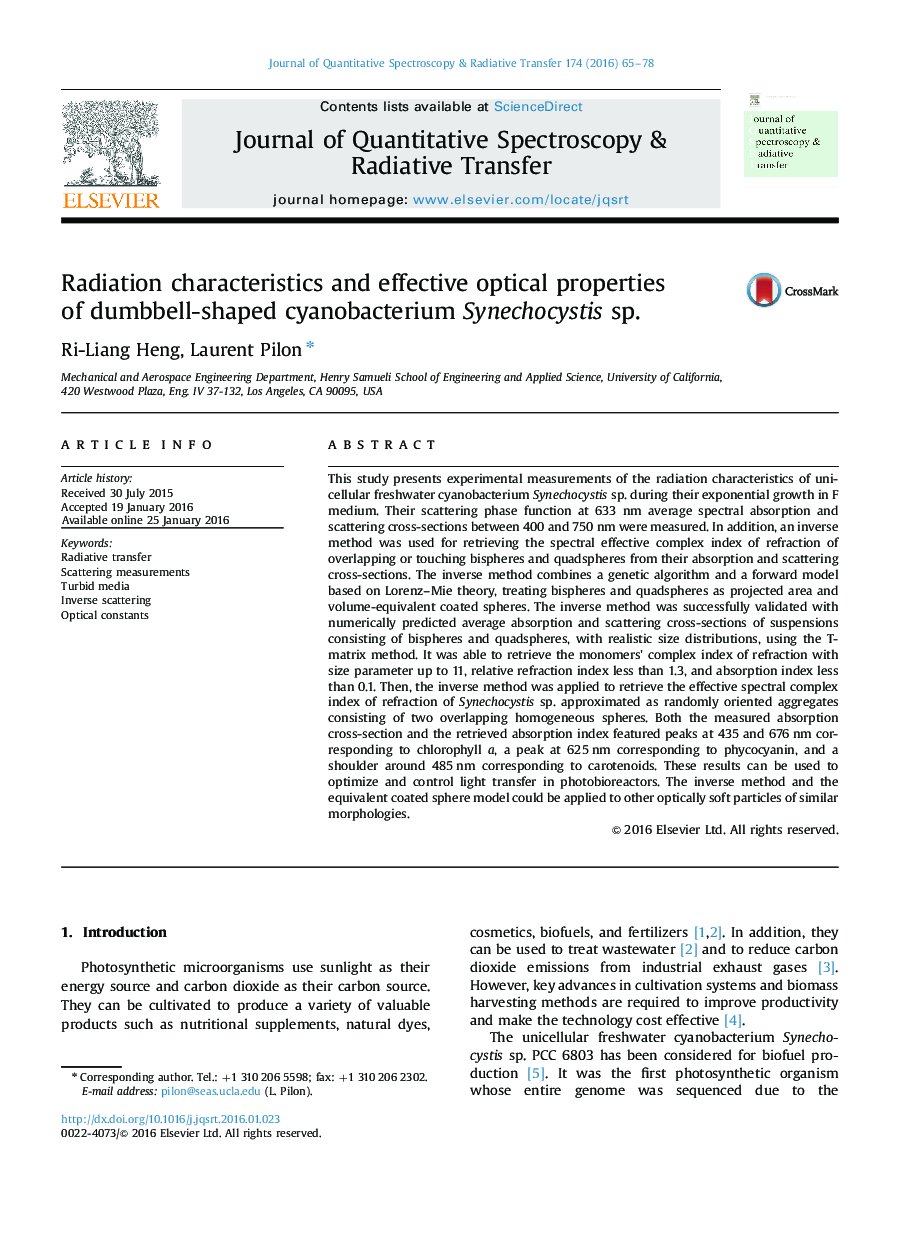| Article ID | Journal | Published Year | Pages | File Type |
|---|---|---|---|---|
| 5427719 | Journal of Quantitative Spectroscopy and Radiative Transfer | 2016 | 14 Pages |
â¢Radiation characteristics of Synechocystis sp. were measured during exponential growth.â¢This unicellular freshwater cyanobacterium features an interesting dumbbell shape.â¢An inverse method was developed to retrieve its effective complex index of refraction.â¢The method was numerically validated for suspensions of bispheres and quadspheres.
This study presents experimental measurements of the radiation characteristics of unicellular freshwater cyanobacterium Synechocystis sp. during their exponential growth in F medium. Their scattering phase function at 633 nm average spectral absorption and scattering cross-sections between 400 and 750 nm were measured. In addition, an inverse method was used for retrieving the spectral effective complex index of refraction of overlapping or touching bispheres and quadspheres from their absorption and scattering cross-sections. The inverse method combines a genetic algorithm and a forward model based on Lorenz-Mie theory, treating bispheres and quadspheres as projected area and volume-equivalent coated spheres. The inverse method was successfully validated with numerically predicted average absorption and scattering cross-sections of suspensions consisting of bispheres and quadspheres, with realistic size distributions, using the T-matrix method. It was able to retrieve the monomers׳ complex index of refraction with size parameter up to 11, relative refraction index less than 1.3, and absorption index less than 0.1. Then, the inverse method was applied to retrieve the effective spectral complex index of refraction of Synechocystis sp. approximated as randomly oriented aggregates consisting of two overlapping homogeneous spheres. Both the measured absorption cross-section and the retrieved absorption index featured peaks at 435 and 676 nm corresponding to chlorophyll a, a peak at 625 nm corresponding to phycocyanin, and a shoulder around 485 nm corresponding to carotenoids. These results can be used to optimize and control light transfer in photobioreactors. The inverse method and the equivalent coated sphere model could be applied to other optically soft particles of similar morphologies.
